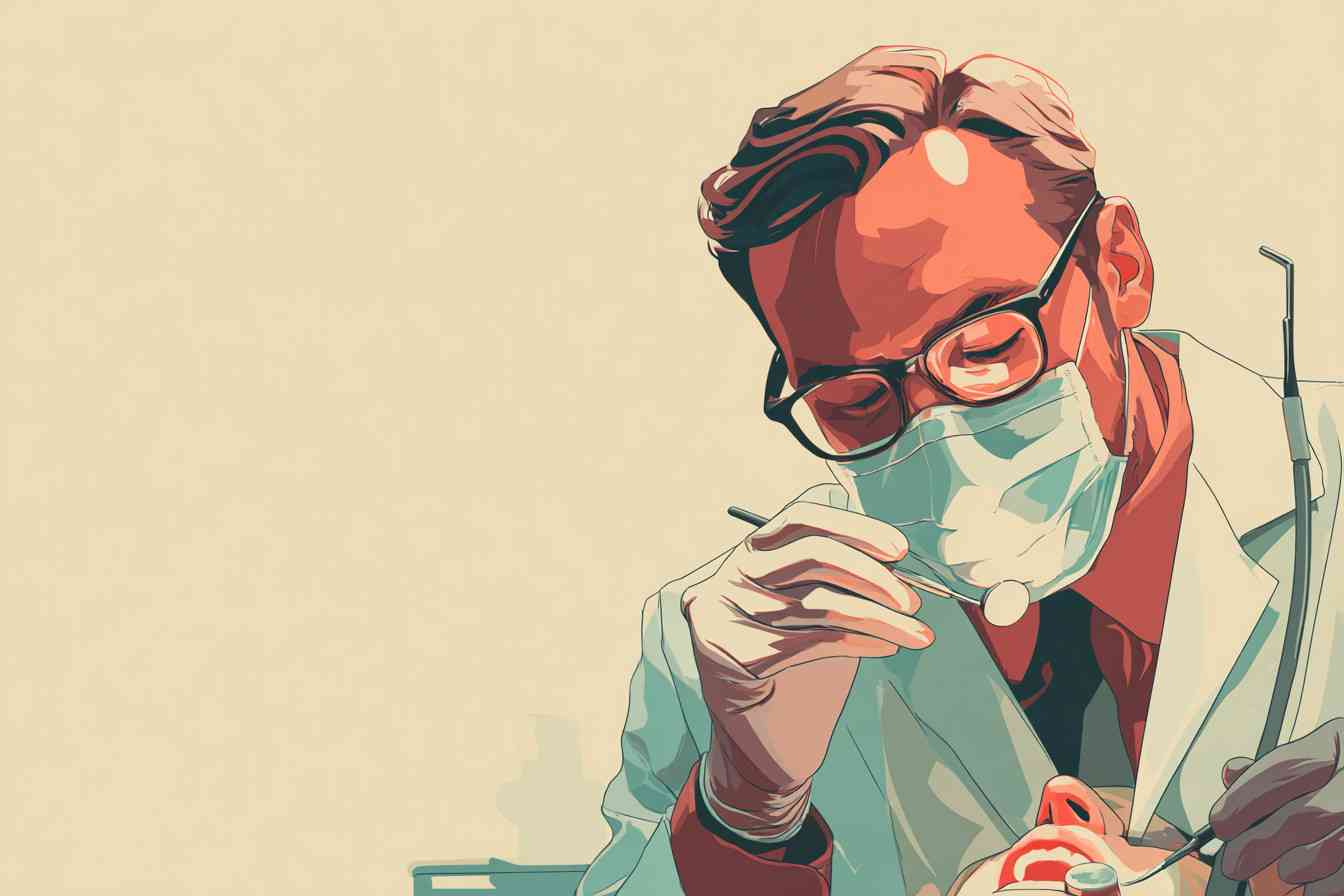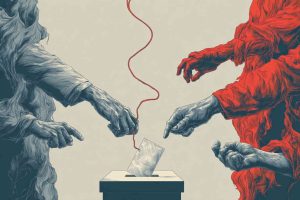The overhyped dental industry: toothpicks, brushing and common sense will do

A trillion-dollar smile
Dentistry presents itself as a pillar of modern health care. Billboards and waiting rooms proclaim the necessity of biannual checkups, professional cleanings, fluoride treatments, and whitening regimens. Yet behind this polished image lies a question rarely asked: how much of dentistry is truly essential, and how much is commercial habit, built on fear and profit?
When one looks closely, much of modern dental advice seems exaggerated. The idea that you must visit the dentist twice a year for a “deep cleaning” is not a scientific law but a marketing convention, originating from toothpaste advertising rather than medical evidence. Daily flossing, careful cleaning between teeth with a toothpick, and regular brushing with a mild toothpaste are, in reality, sufficient for most people to maintain lifelong oral health. The rest, arguably, is a semi-scam.
The origins of “see your dentist twice a year”
The twice-yearly dental visit has become a mantra, repeated in advertisements, schools, and doctor’s offices. Yet this standard has surprisingly little scientific foundation. The recommendation dates back to a 1950s advertising campaign by Pepsodent toothpaste, which popularized the slogan “see your dentist twice a year” to sell more toothpaste. It sounded reasonable, it rhymed, and it stuck.
Over time, the habit was institutionalized into public health messaging, despite the lack of robust evidence that healthy individuals benefit from such frequent visits. A 2013 Cochrane Review titled Recall intervals for oral health in primary care patients (Cochrane Collaboration) found no significant difference in dental outcomes between people who visited the dentist every six months and those who went once every two years. In other words, for individuals with decent oral hygiene, visiting more often did not prevent cavities, gum disease, or tooth loss.
The myth of constant intervention
Modern dentistry often mirrors the broader medicalization of everyday life: the transformation of normal human variation into “conditions” that need professional management. Dentists warn that only trained hygienists can remove plaque, that you need X-rays every year to “catch hidden decay,” and that you must use fluoride treatments even if you already live in a fluoridated area. Yet many of these interventions rest on assumptions, not necessity.
Plaque, for instance, is not a mysterious substance that only professionals can handle. It is a thin biofilm of bacteria and food residue that naturally forms on teeth and gums. When disrupted daily,through flossing, toothpicks, and brushing,it never matures into harmful tartar. It takes roughly 48 hours for plaque to harden, which means that consistent home care can easily prevent buildup. The idea that it can only be removed by a dentist is partly a business strategy to make patients dependent on “cleanings.”
Similarly, dental X-rays are often overused. The American Dental Association itself states that “the need for radiographs varies by individual,” yet many clinics still perform them routinely on every visit. For a healthy adult with no symptoms, taking annual X-rays offers minimal benefit and introduces unnecessary radiation exposure.
The same overreach appears in fluoride treatments. Fluoride can strengthen enamel, but only to a point. If you brush with fluoride toothpaste and live in a region with fluoridated water, additional treatments at the dentist’s office are redundant at best and profit-driven at worst.
Brushing, flossing, and toothpicks: the real foundation
The simple act of mechanical cleaning,physically removing debris and bacterial films,remains the core of oral health. No dental office can replicate the daily consistency of this process at home.
- Flossing reaches the tight spaces between teeth where toothbrush bristles cannot. Regular flossing prevents the bacterial buildup that leads to gum inflammation, known as gingivitis.
- Toothpicks or interdental sticks serve a similar function for people with larger gaps or gum recession. They help dislodge food particles and disrupt bacterial colonies before they mature.
- Brushing with a soft or medium toothbrush for two to three minutes twice a day maintains surface cleanliness. The brand of toothpaste matters far less than the technique and consistency. Overly abrasive toothpaste, whitening formulas, or electric gadgets contribute little beyond marketing appeal.
A 2018 review published in the Journal of Clinical Periodontology (Lang et al.) concluded that interdental cleaning tools,floss, sticks, and interdental brushes,are the most effective way to prevent both cavities and gum disease when used consistently. They outperform “professional cleaning” in long-term outcomes because they address the root cause daily rather than reactively.
In essence, good hygiene practices render most dental visits redundant. The body is remarkably self-maintaining when not neglected.
Fear and authority: the psychology of dental dependence
Why, then, do people still obediently schedule two dental visits per year and pay hundreds for “preventive” procedures that their toothbrush could have prevented? The answer lies in a blend of fear, guilt, and institutional authority.
From childhood, people are taught to fear cavities, root canals, and the dreaded sound of the drill. Dentists occupy a position of both expertise and intimidation, often invoking complex jargon,“periodontal scaling,” “pocket depth,” “enamel demineralization”,to describe simple phenomena. This language gap reinforces dependence. Patients are less likely to question procedures they cannot fully understand.
Economic incentives reinforce this dynamic. Dental clinics are profit-driven enterprises. Routine cleanings, X-rays, and cosmetic services are reliable sources of revenue. Unlike emergency care, these are predictable and recurring. The business model depends on transforming optional maintenance into perceived necessity.
A 2020 study in Health Policy and Planning (Watt et al.) found that dental practices in high-income countries are among the most profitable per square meter in healthcare. Much of this profit comes not from urgent dental work but from “preventive and cosmetic” services. In other words, dentistry thrives when people believe they are perpetually at risk.
The cosmetic trap
Dentistry’s growing focus on aesthetics,whitening, veneers, “smile makeovers”,further blurs the line between health and vanity. While marketed as confidence-boosting or hygiene-enhancing, many of these procedures involve irreversible alteration of healthy teeth.
To place veneers, for instance, dentists grind away the natural enamel, the body’s strongest biological substance, to bond porcelain shells that will eventually need replacement. Whitening procedures use peroxide-based chemicals that can damage enamel microstructure over time. Even routine polishing at cleanings removes a tiny layer of enamel. These are not neutral or harmless acts.
The cosmetic turn of dentistry reflects its commercial roots more than its medical mission. As the British Dental Journal noted in “The commercialisation of dentistry and its impact on ethics” (Jerrold, 2019), the profession increasingly behaves like an industry selling products rather than a medical service promoting health. Patients become customers, and their mouths become markets.
The fluoride question
Few topics reveal the tension between public health and corporate interest as clearly as fluoride. Long hailed as a dental miracle, fluoride indeed strengthens enamel when used appropriately. Yet its benefits plateau quickly, and excessive exposure can cause fluorosis,a condition that weakens enamel and stains teeth.
Many developed nations, including most of Western Europe, have abandoned or reduced water fluoridation programs because dietary sources and toothpaste already provide adequate fluoride. Nonetheless, dental associations and product manufacturers continue to push fluoride treatments and rinses as if deficiency were a widespread threat.
The persistence of this narrative, despite the evidence, suggests that fluoride is partly a symbolic product,a marker of “professional care”,rather than a medical necessity.
As The Lancet Neurology noted in its review “Neurobehavioural effects of developmental toxicity” (Grandjean & Landrigan, 2014), excessive fluoride exposure may even pose neurological risks to children. While these findings remain debated, they highlight the danger of treating fluoride as harmless simply because it is profitable.
Dentistry as an industry, not a science
Dentistry’s commercial structure distinguishes it from other medical fields. Most dental clinics are private businesses operating in a competitive market, not public health institutions. Their revenue depends on procedures, not outcomes. A perfectly healthy mouth, maintained independently, represents lost income.
This creates a perverse incentive to overdiagnose and overtreat. “Microcavities” that would heal naturally through remineralization become fillings. Slight gum inflammation is labeled as “incipient periodontal disease.” Tooth sensitivity is sold as justification for expensive fluoride varnishes.
The American Journal of Public Health in “Overtreatment in dentistry: implications and solutions” (Bader & Shugars, 1995) warned that fee-for-service payment models promote unnecessary interventions and inflate healthcare costs without improving oral health outcomes. That warning, nearly three decades old, remains largely ignored.
What true prevention looks like
Real prevention in dental care requires no professional oversight. It consists of simple habits rooted in common sense and biology:
- Daily mechanical cleaning. Floss or use a toothpick after meals to disrupt bacterial colonies before they harden.
- Gentle brushing. Twice a day, using minimal toothpaste, is sufficient. Excessive brushing or abrasive formulas damage enamel and gums.
- Balanced diet. Limit frequent sugar intake, which fuels bacteria, and include fibrous foods that naturally clean teeth.
- Hydration. Saliva is nature’s mouthwash, neutralizing acids and remineralizing enamel. Chronic dryness, from alcohol or medications, increases risk.
- Avoid unnecessary chemicals. Mouthwashes with alcohol or antiseptics can disrupt the mouth’s microbiome, often causing the very bad breath they claim to cure.
These practices, when consistent, prevent 95% of dental problems. The remaining 5%,genetic anomalies, trauma, or systemic disease,are legitimate medical issues, but they are the minority.
For the average person, the best dentist is a mirror, floss, and a bit of discipline.
The social cost of overmedicalization
The elevation of routine dental care into a quasi-religious ritual also burdens society. Millions spend hundreds annually on cleanings, X-rays, and cosmetic treatments that offer marginal health benefits. In countries without universal dental coverage, this money often comes directly from household budgets.
Meanwhile, truly necessary dental care,emergency extractions, infections, or prosthetics for the elderly,remains unaffordable for many. The industry’s focus on profit rather than access widens inequality.
As The New York Times reported in “The Dental Divide” (Otterman, 2021), millions of Americans avoid dental visits entirely because of cost, while others overconsume unnecessary services because insurance encourages routine checkups. The result is a paradoxical system: overtreated mouths among the wealthy, untreated pain among the poor.
The illusion of precision
Dentistry often portrays itself as an exact science, yet many diagnoses are subjective. Caries detection, for example, relies heavily on visual inspection and radiographs, both prone to interpretation. Different dentists may recommend drastically different treatments for the same tooth.
A 2012 study in Community Dentistry and Oral Epidemiology (Kay & Blinkhorn) showed that diagnostic variation between dentists for early decay lesions was as high as 40%. This means that nearly half of “required fillings” are based on personal judgment rather than objective need.
In other words, dentistry often operates in a grey zone where art, habit, and commerce intersect. Patients assume precision where there is only probability.
When dentistry was about pain, not profit
Historically, dentistry emerged as a practical trade, not a medical science. Barbers and craftsmen extracted diseased teeth to relieve pain, a simple and honest service. It was only in the 19th century that dentistry professionalized, aligning itself with medicine and introducing schools, licenses, and complex procedures.
This transition brought hygiene improvements and legitimate advances, but it also introduced hierarchy and profit motives. The dentist became not a craftsman serving pain relief but an authority figure managing “oral health” as a lifelong subscription.
The old model,see the dentist when you are in pain,may sound primitive, yet it reflects a grounded realism. It recognizes that the human body, including the mouth, is self-healing and resilient, not a fragile system requiring constant professional oversight.
A return to self-reliance
Reclaiming oral health means reclaiming trust in the body’s natural capacity for maintenance. The mouth is not an alien ecosystem requiring biannual intervention; it is part of a living organism evolved to manage bacteria, repair enamel, and balance acidity.
With simple habits,floss, toothpick, gentle brushing, and mindful eating,most people can remain cavity-free for decades without ever submitting to the drill. Occasional visits for visible problems are sensible, but routine “checkups” for reassurance are largely cultural rituals, not medical imperatives.
Dentistry, in its current form, is partly a semi-scam: not in the sense that all dentists are dishonest, but because the industry sustains itself by exaggerating risk, medicalizing hygiene, and monetizing fear.
True dental health begins not in the clinic chair, but in the quiet moments after a meal, with a simple piece of floss and the knowledge that prevention is already in your hands.


















